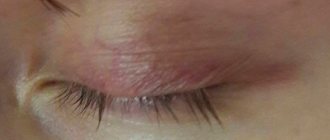Shopaholism is an uncontrollable urge to make purchases without the need for them. The analyzed concept has come into use relatively recently, but the number of people suffering from addiction to shopaholism is constantly increasing. Shopaholism is a disease also called oniomania, which means making crazy purchases. The described attraction is often equated to alcoholism or other variations of addiction. However, this is erroneous, since the uncontrollable attraction in question does not have such a detrimental effect on the existence of individuals. The female sex is more susceptible to shopaholism, however, men are not immune to this scourge. The main sign of this dependence can be considered the lack of rational content when purchasing a certain product.
What is shopaholism
Shopaholism or oniomania is an uncontrollable desire to shop. Moreover, most of them are unnecessary and represent unreasonable expenses. Otherwise known as compulsive shopping.
The word "oniomania" comes from two Greek words. Onis is for sale, and mania is madness. The translation speaks for itself. Shopaholism is not considered a disease and is therefore not listed in the International Classification of Diseases or ICD-10. According to many scientists, this is just a sign of a lack of willpower. They compare it to a craving for sweets, for example.
However, in fact, shopaholism is a real disease. According to studies, going to the store provokes the same changes in the body of a shopaholic that occur in alcoholics, drug addicts and gambling addicts. It turns out that this is the same form of addictive behavior, a mental disorder that requires treatment.
A little history and statistics
Shopaholism was first talked about as a disease and addiction back in the 19th century. German and Swiss psychiatrists Emil Kraepelin and Eugen Bleuler described its symptoms and manifestations. The most famous shopaholic of the 20th century is rightfully considered Barbara Zielinski, who even compiled a number of rules for people like her:
- Those who get up early will visit more shops.
- If you don’t buy something you need, it will harm your health.
- We won't stand behind the price.
Barbara distinguished herself by managing to spend her husband's salary in less than 2 minutes. This became a world record. The man, unable to cope with his wife’s hobbies, eventually divorced her.
Today, the largest number of people suffering from shopaholism live in America. There are about 15,000,000 of them. There are 700,000 shopaholics in England. In Russia, 7% of the population suffers from oniomania.
The most famous shopaholics of our time are Victoria Beckham and Sarah Jessica Parker. The first one already has more than 100 bags from one famous brand. And the second one cannot resist buying another pair of shoes. Sarah now has over 100 different pairs.
Types of shopaholics
Shopaholism manifests itself differently in everyone. In psychology, there are several types of shopaholics:
- Impulsive. Such people do not agree that they have a problem. They go to the store with a list of necessary products and things, but already there they forget about it, buying everything they see on their way. And if the store is having a sale or there are discounts, excess purchases will be made 100%.
- Conscious. The person realizes that he has oniomania. He also understands that the desire to buy new clothes or any other product appears in those moments when he is stressed. For him, going to the store is one of the ways to relax, lift his spirits and take his mind off bad thoughts. Alcoholics take alcoholic beverages for this purpose, drug addicts use prohibited substances, and conscious shopaholics make meaningless purchases.
- Purposeful. This type of shopaholic is the most difficult for psychologists to work with. Their desire to buy everything does not depend on their mood or stress. They don’t see the problem and don’t agree that they have an addiction. Purchases are made spontaneously. Moreover, in most cases they do not remember how they did it and why.
- Copycats. Shopaholics of this type will definitely buy an item that they saw from friends, acquaintances, in commercials, or just from someone on the street. Nothing will stop them.
- Saving. This kind of shopaholism is called veiled. A person sincerely believes that he knows how to save money. And he really tries to live frugally. But once you find out about sales and discounts, the situation changes radically. He rushes headlong to the store, which leads to unjustified spending and the acquisition of completely unnecessary things.
It’s worth mentioning separately about shopaholic collectors. They cannot stop when there are antiques, certain types of shoes, clothes, etc. in front of them. They will buy all this without hesitation.
Why you should overcome your addiction to unnecessary spending
Nowadays, surrounded by bags with logos of fashion brands, you can’t see beyond your nose. Remember what time of year it is now. Walk through the park, stepping on the yellow leaves that rustle so pleasantly under your soles. After all, feeding the ducks in the pond will bring joy to wonderful creatures. Pay attention to the songs of street musicians; they create the magical atmosphere of the city.
But this is all true happiness!
After all, life is like a flea market: who knows when real treasures will turn up.
movie "Shopaholic"
Nature and the environment help us cope with all the difficulties that fate throws at us.
Reasons for the development of shopaholism
Like other types of mental disorders, shopaholism or oniomania has its roots in childhood. There are two wrong parenting models:
- The child is made into a family idol. He is spoiled, capricious, demanding, and gets everything when called upon. As a result, an emotionally unstable, selfish person grows up. As a child, he received a lot of attention. Trying to attract him as an adult, he demonstratively spends money left and right. Moreover, these expenses are completely unreasonable.
- In the second model of upbringing, an authoritarian regime dominates in the family. Parents constantly demand something from their child. They do not show him love and affection, do not care about him. Therefore, the child feels deprived and abandoned. As adults, such shopaholics strive to make up for the lack of a good attitude. By buying unnecessary things, they show how much they love themselves. This is how they gain a sense of need.
Other reasons for the development of shopaholism are:
- feeling of dissatisfaction with oneself and life, loneliness;
- attention deficit;
- lack of love and male interest (for women);
- desire to receive recognition and praise.
Another reason for shopaholism is the desire to again experience the pleasant sensations of making a purchase. At this moment, the amount of serotonin or the happiness hormone increases in the body. It gives pleasure and also helps to cope with negative emotions.
Don't forget about the influence of advertising. Marketers know how to present a product in such a way that a person wants to buy it with all his heart. They show the relationship between a thing and qualities such as sexuality, attractiveness, status, etc. By making purchases, a shopaholic increases his self-esteem, shows his importance and financial well-being.
Wrong parenting model
The character of a shopaholic is filled with undesirable traits. Among them -
- poor resistance to stress;
- inadequate self-esteem;
- increased suggestibility;
- egocentrism;
- hypertrophied anxiety;
- hypersensitivity;
- reduced adaptive capacity;
- emotional imbalance.
These personality traits are formed under the influence of improper upbringing . Two of its models are fatal.
The first involves raising a child like a family idol. They pamper him and buy him everything he wants. Usually such children, and then adults, are capricious, selfish, and emotionally unstable. Shopaholics of this kind have been spoiled by attention since childhood. Having no special abilities, they attract attention to themselves by ostentatiously spending money. They buy expensive but useless goods. Their spending is thoughtless, they easily spend all their money.
The second model of education is like Cinderella. These are children of authoritarian parents, who have been accustomed to a harsh, strict attitude since childhood. They lack love, attention, affection, care, recognition. “Cinderellas” feel abandoned, useless to anyone. In childhood, such people were subject to excessive demands. They were taught to strictly adhere to the rules without the possibility of departure, and Spartan education was used.
Through multiple purchases, Cinderella oniomaniacs try to compensate for the lack of parental love and, possibly, material wealth. If no one loves them, then they probably love themselves and will buy anything for themselves, their loved ones. If “Cinderellas” are trying to make up for what they were deprived of in childhood, then such individuals do not choose nonsense, but acquire more practical things.
Star shopaholics include Victoria Beckham and Sarah Jessica Parker. Victoria can spend up to 150 thousand dollars in 1 day. Once the star purchased glasses worth 25 thousand dollars, and then lamented that she had made an absolutely useless purchase. But her main passion is Hermes bags. She has about a hundred of them.
Sarah Jessica Parker, like her character in the TV series Sex and the City, loves shoes. Her arsenal includes both very expensive models and cheap ones, costing $100. In total, the star has about a hundred pairs of all kinds of shoes and boots. Sarah admits that she can't pass by a pair of shoes she likes.
Signs of shopaholism
Shopaholism or oniomania has a number of characteristic symptoms:
- Shopping, visiting sales and monitoring discounts becomes the main hobby of a shopaholic. With these activities he replaces any other recreation, for example, reading books, walking in the fresh air, playing sports, watching TV, etc.
- A person develops a bad habit of buying what he doesn’t need. And he can't be stopped. In his apartment or house you can find a real warehouse of boxes and bags with new purchases. But it is unlikely that he will use any of this.
- How do you behave if you need to buy, say, a new slow cooker? Be sure to first study the assortment, compare prices, decide on the configuration and set of necessary functions. A person with shopaholism will do the opposite. He will buy everything.
- If a shopaholic does not have enough money to buy the desired product, he begins to panic, using any means to get what he wants. This often ends in taking out a loan at unreasonably high interest rates. A person who does not suffer from shopaholism usually in this case postpones the purchase until later.
- Usually shopaholics are fans of watching fashion shows and TV shows about fashion, as well as leafing through fashion magazines. They understand clothing brands and the latest trends better than others. People with shopaholism are ready to talk about these topics for days. By the way, this is often the only topic in which they are well versed.
- Walking through shops and shopping centers gives a person incredible pleasure. Even window shopping makes him happy.
- To get rid of stress or cope with anxiety and worries, a shopaholic does not go to the gym, go into nature or meet with friends. He goes to the store. This is the only thing that can calm him down and bring him to his senses.
To the list of signs of shopaholism you can also add the loss of a sense of time and control over money, the uselessness of absolutely all purchases, and resentment that family and friends condemn such behavior.
Shopaholism is judged if at least half of the listed signs are present.
When to sound the alarm
There are clear signs of shopaholism that cannot be missed. A shopaholic is interested in fashion trends. Follows fashion trends and buys relevant magazines. He often has a desire to acquire something, especially in stressful situations. This obsessive thought does not go away until the patient goes shopping.
The desire to make a purchase becomes so strong as the process progresses that it almost constantly accompanies oniomaniac. At the same time, the person does not clearly know what he wants to buy. If for some reason the patient is deprived of the opportunity to go shopping, his mood drops sharply and his sleep is disturbed. He falls into a depressed state, becomes aggressive or apathetic.
Directly during shopping, the following signs attract attention:
- inspection of all goods, without individual preferences;
- Immediately before and during a trip to the shops, a shopaholic experiences a feeling of euphoria. The patient thinks only about buying more and more of everything. He is completely absorbed in the process. It is very difficult to distract an oniomaniac from shopping. Scientists conducted a study in which they studied the brain of a patient while shopping. It turned out that the part of the brain that is responsible for logical thinking is completely switched off in oniomaniacs during a shopping trip, and the area responsible for emotions, on the contrary, is activated;
- the patient loses the sense of time. Can spend dozens of hours in stores;
- the goods purchased are usually useless. They are not of strategic importance;
- while shopping, the onioman is in high spirits;
- control over finances is lost. The patient is capable of “squandering” quite large sums in one day;
- After making purchases, he enthusiastically discusses the purchased goods. He gets angry when he receives reproaches from loved ones for stupid purchases and excessive spending.
After an attack of shopaholism, a person may be tormented by remorse for having wasted, for example, the entire family budget.
He scolds himself for once again succumbing to his whim. Against this background, a depressed mood is formed. The appearance of vegetative symptoms in the form of hypertension and heart pain is possible. But such remorse is unstable. Soon the shopping addict goes on another hunt again. Men and women oniomaniacs have certain differences. Ladies in most cases spend money uncontrollably on wardrobe items, cosmetics, and jewelry. Representatives of the stronger half of humanity buy goods that symbolize power and prestige: cars, yachts, watches, mobile phones. Their purchases are more conscious. Often the purchased product expresses those qualities that a man who is a shopping addict lacks: confidence, reliability, nobility.
At the early stage of the disorder, the patient is able to carefully hide his inclinations. Therefore, relatives do not always recognize the problem in time. It is also difficult to diagnose shopping addiction among wealthy people. Such a person can afford quite a lot. Therefore, when he falls into endless spending, it is perceived as in the order of things.
Oniomania is a disorder that, at first glance, seems harmless . In fact, it leads to disastrous consequences. Often, shopping addicts accumulate large amounts of debt because they are forced to borrow money for their promenade after thoughtlessly squandering their savings.
Financial difficulties lead to conflicts with loved ones. Often, families of shopaholics fall apart due to obsession and constant spending.
The disease has particularly severe consequences. So, a 27-year-old girl committed suicide. The reason was debts accumulated as a result of shopaholism. The suicide reported this in her suicide note.
Consequences of shopaholism
Psychologists consider shopaholism a socially acceptable addiction. In essence, a person does not harm others. If it does not cross acceptable boundaries, then oniomania really helps improve mood and overcome stress. This is where it differs from alcoholism and drug addiction. The “patient” does not degrade as a person, does not steal or kill.
But there is still a problem with shopaholism and it lies in the deterioration of relationships with family and friends. In most cases, they do not approve of unreasonable waste of the family budget. What can we say about situations when a person takes out several loans. Sometimes all this ends in loud scandals or even divorce.
Oniomaniac himself also suffers from shopaholism. If he cannot pay off loans and debts, he develops depression, anxiety, and neuroses. The problem is that he cannot eliminate them, because he is used to doing this through purchases. The inability to get what you want provokes apathy. It turns out to be some kind of vicious circle.
Sellers of happiness
Trading companies, in particular, bear a significant share of responsibility for the growing number of “shopping addicts.” Shops are turning into entertainment centers where everyone, young and old, has something to do. You can enter there in the morning and leave at night. Pressure is also exerted by aggressive advertising, which is difficult even for adults to resist, let alone children and teenagers. Moreover, advertising strategies for promoting goods today are specially developed taking into account human psychology. Of course, this effect is imaginary. Advertising slogans put pressure on the delicate strings of the soul: “After all, you deserve it!”, “They will envy you!”, “I can afford it”... Manufacturers today are not selling a product, but a dream of happiness, love, respect, which each of us needs .
It's hard to imagine a woman indifferent to fashionable new things. After all, the desire to please the fair sex is in the blood. But sometimes a woman’s natural penchant for dressing up goes beyond all boundaries. And there are reasons for this. If 5-6 centuries ago fashion changed no more than a couple of times a century, today this happens at least twice a year, and collections in stores are updated even more often. How can I resist here?
Advice from psychologists: how to treat shopaholism
Treatment of shopaholism begins with awareness of the problem. Then you need to find out at what point the irresistible desire to make a purchase arises. Maybe you're bored? Or are you feeling angry and aggressive? To understand exactly what pushes you to thoughtless spending, keep a diary of emotions. Write down everything you feel in moments of breakdown. This will help you see the picture from different sides.
Now think about it: what need are you replacing with shopping? Do you miss entertainment and communication with friends? Or is this an attempt to cope with negative emotions?
Next, determine what exactly you like about shopping. This could be the opportunity to spend time with friends who accompany you, looking at a product surrounded by many people, searching for the necessary thing.
Once you understand what need remains unmet, find a way to satisfy it. Chat with friends, walk outdoors more often, play sports. Spend more time with your family and friends. Don't be shy about asking them for support.
How to deal with shopaholism: 10 ways
So, how to get rid of shopaholism? There are 10 ways:
- If you go to the store, take only cash with you. A credit card will give you the feeling that the money is endless. But a real bill will help get rid of it. You will understand that you are giving it away irrevocably.
- Under no circumstances should you apply for a loan if you currently do not have the opportunity to buy what you want. Sign a loan agreement only in cases where it is really necessary. This may be the need to treat a serious illness, purchase vital goods, etc. A loan is also justified when purchasing household appliances, a car and other products that are difficult to save up for.
- Always take your shopping list with you. Even before leaving home, calculate how much money you need for them. Don't deviate from what you have planned.
- As soon as you have the urge to go to the store, stop, take a break. Convince yourself that you will go there next time, and now you need to do something else. A pause gives you the opportunity to cool down and think about whether the thing you wanted to buy is really necessary.
- Another effective way to combat shopaholism is to always remember that discounts and sales are a smart marketing ploy designed to increase sales. So don't be tempted by them.
- Resist yourself from the desire to buy the first thing you come across. If you know exactly what you want, go to other stores, compare prices and quality.
- Don't forget that in a few months the new collection will cost much less than it does now. While it becomes cheaper, you will be able to understand whether you need these things or not.
- To successfully combat shopaholism, ignore magazines and fashion shows. Avoid advertising, do not go to online shopping sites.
- Find an activity that will take your mind off shopping. A new hobby can help you improve your mood and combat stress in other ways.
- Always justify your purchases. First, consider the feasibility of purchasing this or that item, then study discounts and advantageous offers.
If one of your relatives suffers from shopaholism, try to protect him from stressful situations that may provoke the desire to run out shopping. Do not conflict with him, but rather find joint activities that will give you positive emotions. If the situation gets out of control, limit the person's access to finances.
Who suffers most from oniomania?
This disorder cuts across all income classes and age structures. It appears to affect women more than men and younger people more than older people. And there are definitely men who are into shopping too.
The level of shopping addiction may vary, but there is a gender stereotype of shopping. Women love to buy clothes, shoes, cosmetics and decorative items; men prefer appliances.
However, research on imitation is still very young. On the one hand, this is due to the fact that the disease is not an official diagnosis - in this case, less money is invested in research. On the other hand, one cannot pathologize the desire to acquire as such, that is, consider it pathological. Because this does not apply to all people who shop online - what they do is completely normal. For 95 percent of the world's people, shopping is not a health issue.
Shopaholism / Oniomania: causes and consequences









